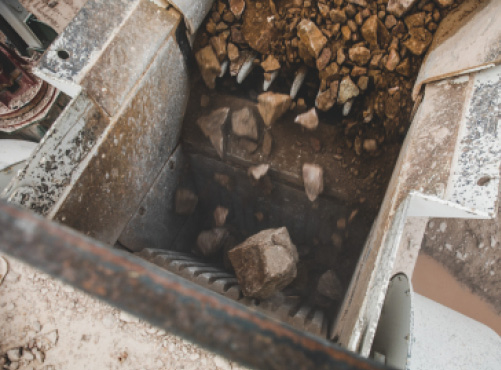
Whether you’re a seasoned crushing veteran, or tackling your first season on the job, one should always employ the “best practices” toward crushing efficiency. “First off, specifying the right jaw crusher for ‘the given application parameters’ is essential to cost-per-ton efficiency,” said Jarrod Adcock. As the crushing product manager with Superior Industries, Adcock is a member of Superior’s rockface-to-loadout solutions team, which helps producers fine-tune crushing circuits to ensure proper material flow throughout the entire plant. He outlines three simple rules behind properly sizing a jaw crusher.
Rule #1: Identify maximum feed size. The size of the crusher opening directly determines the maximum feed size going into the crusher. For example, if the jaw has a 30-in. opening (gape), the maximum feed size should not exceed 80% or 24-in. If crusher feed exceeds the maximum recommended feed size, operations will experience production interruptions – so, correctly identifying maximum feed size is particularly important to proper crusher sizing.
Rule #2: Determine desired product size. Your closed-side setting (CSS) of the crusher determines the desired product size that will be produced. The CSS is the minimum distance between the jaw liners at the bottom of the crushing chamber when in operation. For example, a 40- x 51-in. jaw crusher calls for a maximum feed size of 32-in., a CSS range of 4- to 8-in.; and produces a desired product size that fits within that CSS range.
While various crusher sizes have similar CSS range spans, some crushers operate in a bit tighter CSS range than others. The key is looking at the desired reduction ratio, or how far you wish to break material down in one pass. Industry standards commonly dictate that the ideal reduction ratio of a jaw crusher should be 6-to-1.
Rule #3: Define tonnage goals. The desired production capacity, or tonnage-per-hour required directly correlates to the width of the crusher and the closed-side setting. That means that a jaw with a 42-in. width, and a CSS range of 2.75- to 8-in. will average a production capacity of 165 to 550 tph, while a similar crusher with a 55-in. width will have a capacity range of 265 to 855 tph. Adcock said that another element to consider in crusher capacity is material hardness and the percentage of material in the feed that is smaller than the crusher CSS.


Right-Sizing From the Start
Always match the crusher to the task. If the jaw crusher is too small, you’re not going to get the desired tonnage out of the machine – and if your feed material is too large, you will certainly experience excessive wear and tear, plus costly damage, and downtime. Alternatively, if the jaw crusher is too large for the application – the operation is spending too much money within that circuit and is inefficient in purchasing power.
Most producers can easily identify the jaw crusher size they’re looking for, as their choice is often based upon what jaw they previously ran – and if they need something similar or different. However, there are also those operations who rely upon the assistance and expertise of their chosen crusher manufacturer.
Bottom-line, Adcock said that if the producer provides accurate data on feed size, desired product size, and tonnage goals, “we can select the right crusher for the application.”
Superior Industries, www.superior-ind.com
